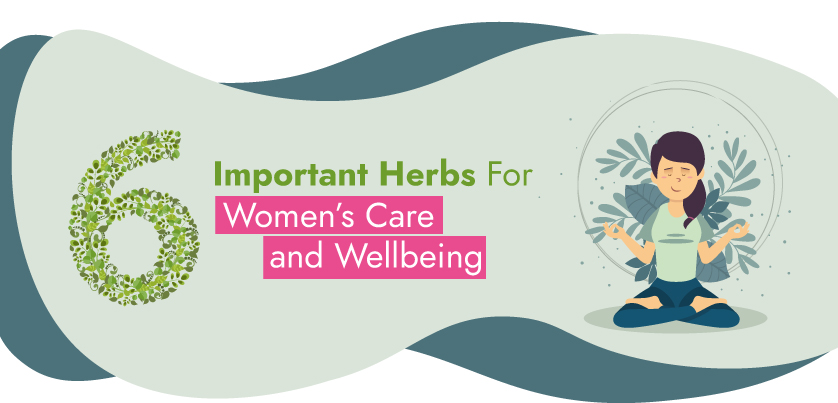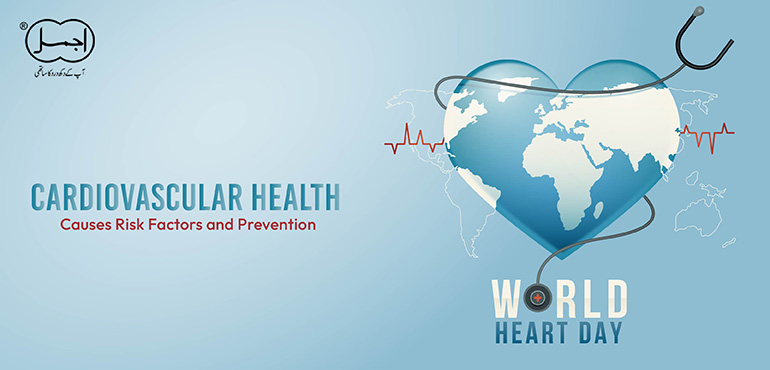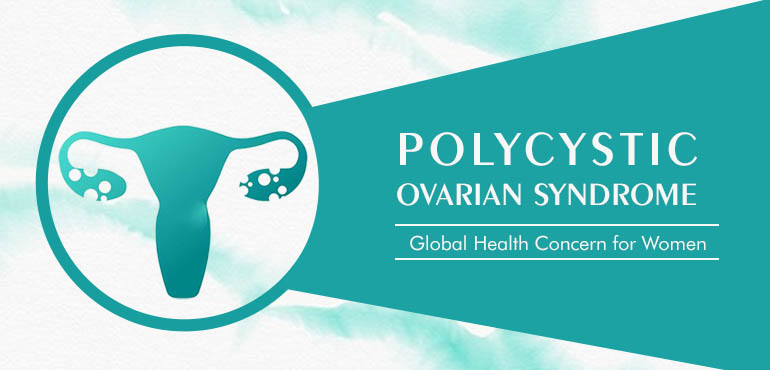A female body has to go through a lot throughout life irrespective of age. Whether a young unmarried lady or married, with children or without children, a middle-aged woman or an older woman – a woman’s body is destined to go through many hormonal natural changes. These changes can be a challenge to a healthy lifestyle and can cause various symptoms (Khan and Sahu, 2021). Taking appropriate herbs for women’s care, regular exercise, eating healthy and nutritious food and various other healthy lifestyle choices help females through these necessary changes smoothly(Khan and Sahu, 2021).
Because of so many crazy changes in the body, females can suffer from various health issues. Among which breast cancer (Sartaan-e-Pistan), gynecological disorders, pregnancy complications,osteoporosis, and depression (Zehni Dabao) & anxiety (Iztaraab-e-Nafsani) are most common. But the various herbs for women’s care along with other healthy measures guarantee them a healthy life.
Breast Cancer (Sartaan-e-Pistan)
It is one of the most common forms of cancer that affects women throughout the world. One of the main reasons associated with breast cancer is, extended exposure to estrogen from the onset of puberty (Baloghat) till menopause (Ihtibas-e-Tams).
Breast cancer is characterized by lumps which typically originate from the lining of milk ducts. However, these lumps are not life-threatening. But still they can become harmful. That’s why women should have these lumps checked by health care providers.(Abdi et al., 2016) A health care provider can even recommend herbs for women’s care.
Gynecological disorders
These are disorders of the female reproductive system. Most organs which are affected by these disorders are breast, fallopian tubes, genitalia, ovaries and uterus. (Dr. Harpreet Arora, 2019). The most common gynaecological disorders are as follows:
- Leucorrhea (Sailan-ur-Rahem) (excess white vaginal discharge)
- Menstrual disorders
- Genital prolapse
- Benign ovarian cysts/Polycystic ovarian syndrome (PCOS)
- Pelvic inflammatory disease
- Dysmenorrhea/Amenorrhea (Usr-I-Tamth) or absence of period
- Fibroids
- Endometriosis
- Vaginitis (Waram-e-Andaam-e-Nehani)
- Menopause (Whiteman et al., 2010)
Pregnancy complications
Pregnancy complications are health-related problems from which females suffer during pregnancy. These complications can affect the health of the mother, child or both. Some females have several health-related issues before they get pregnant which leads to further complications if left unattended. Thereby, the use of herbs for women’s care can solve all of their problems that lead to pregnancy complications later in life. Some common pregnancy complications include:
- Miscarriage (Isqat-e-Janin)
- Preeclampsia
- Gestational diabetes
- Stillbirth
- Depression and anxiety
- Hyperemesis (Sissons, 2021)
Osteoporosis
It is characterized by fragile bones i.e., bones which are more likely to break. We usually associate osteoporotic fractures with substantial pain and disability which ultimately affect the overall quality of life.
The risk of Bone Mass loss and subsequent fracture majorly makes a strong background for menopause activity. After menopause, there is an increase in estrogen level which speeds up resorption and bone mass starts to diminish (Ji and Yu, 2015). But with herbs for women’s care now we can avoid bone mass loss to some extent. For the strengthening of bones after menopause, health care personals suggest to drink milk and have vitamin D rich diet as much as required. This can compensate for female body weaknesses by the estrogen hormone deficiencies late in life.
Depression and Anxiety
Natural hormonal variations can cause depression (Zehni Dabao) and anxiety (Izteraab-e- Nafsaan).Premenstrual syndrome (Mutlazima Qabl Haiz) and premenstrual dysmorphic disorder (PMDD) are the most common psychological issues in females.
Sadness, tiredness and baby blues which is a form of depression that women face immediately after giving birth are some other psychological problems in women. Various herbs for women’s care can help you recover from these conditions due to their anti-anxiety and aphrodisiac effects. Perimenopause and menopause can also cause depression in many women (SERVICES).
What is puberty in females?
Puberty (baloghat) begins at the age of 8-13 in females. Puberty is the age when a female body develops changes and matures these changes are driven by sex hormones like estrogen, follicle-stimulating hormones and luteinising hormone (Knudtson and McLaughlin, 2019).
What is menopause in females?
Menopause (Ihtibas-e-Tams) is the time when female stops having her monthly period. It is the age when a female stops ovulating and cannot reproduce anymore. Perimenopause, menopause and post menopause are stages of menopause and it typically begins in the late 40’s s or 50’s (Gold, 2011).
Some Herbs for Women’s Care
A wide variety of herbs for women’s care are used to manage such health concerns. Some of them balance your hormones; they’ll help balance estrogen-progesterone levels. These herbs for women’s care not only maintain hormone balance but are also necessary for mental and physical health.
Black Cohosh (Actaea racemose)
It is a traditional herb native to North America(Leach and Moore, 2012). Because of deobstruent properties (Mufatteh-e- sudad) black cohosh is typically used to treat irregular menstruation, and relieve post menopause (Ihtibaas-e-Tams) symptoms such as anxiety, insomnia, hot flashes and excessive sweating (Mahady et al., 2002).
Black cohosh is used in various medical conditions such as rheumatoid arthritis, joint inflammation, sore throat, menstrual cramps and labour pain because of its healing properties (Mundamil-e-qurooh) (Goel and Maurya, 2019).

Satavar (Asparagus ravenous)
It is a traditional Indian herb that is said to be one of the herbs for women’s care, especially for the endocrine system. This herb balances female hormones in all the age groups from puberty to menopause (Ihtibaas-e-Tams) (Khan and Sahu, 2021).
Shatavar is a very useful herb to deal with female reproductive system related complications including hormonal imbalance, immature follicular growth and development, PCOs and infertility. Because of its anti-inflammatory (muhallil-e-waram) properties, Shatavar can cure inflammation of the ovaries (Waram-e-baza dani) and uterus (Waram-e- Rahem) (Khan and Sahu, 2021).
Moreover, this herb helps in preventing miscarriage by preparing the female womb for conception. It plays a vital role in the normalizing uterus and increased lactation if used after childbirth(Khan and Sahu, 2021).

Ashwagandha
Dunal or Ashwagandha (Withania somnifera (L.)) is a traditional herb used to relieve stress and improve mental wellbeing. It has many active constituents like steroidal lactones, saponins, alkaloids and withanolides are responsible for its antidepressant, anti-inflammatory and anxiolytic (Muhllil-e-Iztaraab-e-Nafsani) effects.
It is also very useful to balance mood swings and increase mental alertness and focus. It can be used in both powdered and extracted from
All of the above mentioned herbs for women’s care are widely available throughout the world in raw and ready to use form. There is no doubt that herbal medicines are easy to obtain and way cheaper than prescription drugs. These mentioned herbs for women’s care are being used by every age group and are scientifically proven.

Vitex
Chasteberry (Vitex Agnus) is a traditional Asian and Mediterranean shrub and is very helpful to boost fertility in females and treat the symptoms of menopause (Ihtibaas-e-Tams) and premenstrual syndrome (Mutlazima Qabl Haiz). Chastberry has anti-inflammatory (Muhallil-e- warm), deobstruent (Mufatteh-e- sudad), and progesterone-like effect by which it helps maintain estrogen-progesterone levels (Harbin, 2000)

Maca/ kora Jarr
Peruvian ginseng or maca (Lepidium meyenii) is widely grown in South America. This herb is used to treat various female hormones related to reproductive health issues like libido and infertility by maintaining normal hormone balance(Tiwari and Pandey).
Maca is also used to relieve PMS symptoms like hot flushes, sleep cycle disturbance, excessive sweating and virginal dryness due to low estrogen levels(Ross, 2021). It is also helpful to treat anxiety, depression and sudden mood disturbances after menopause (Tiwari and Pandey).

Red Clover (Trifolium pratense)
It is widely grown in Europe, central Asia, and northern Africa. Red clover is a very beneficial herb for females as it contains an estrogen hormone-like constituent called phytoestrogens.
Red Clover not only does it ease menopause symptoms but it is also effective in lowering the risk of osteoporosis as red clover contains isoflavones which boost the bone mineral density and slows down bone loss(Abdi et al., 2016).

ABDI, F., ALIMORADI, Z., HAQI, P. & MAHDIZAD, F. 2016.Herbs for Women’s Care.
Effects of phytoestrogens on bone mineral density during the menopause transition: a systematic review of randomized, controlled trials. Climacteric, 19, 535-545.
- HARPREET ARORA, M. 2019. Ten Most Common Gynecological Problems Every Woman Must Know.
GOEL, B. & MAURYA, N. K. 2019. Overview on: Herbs Use in Treatment of Primary Dysmenorrhea (Menstrual Cramps).
GOLD, E. B. 2011. The timing of the age at which natural menopause occurs. Obstetrics and Gynecology Clinics, 38, 425-440.
HARBIN, R. E. 2000. Professional’s handbook of complementary & alternative medicines. Pediatric Nursing, 26, 437.
JI, M.-X. & YU, Q. 2015. Primary osteoporosis in postmenopausal women. Chronic diseases and translational medicine, 1, 9-13.
KHAN, R. & SAHU, N. 2021. IMPORTANCE OF SHATAVARI CHURNA FOR FEMALES ACCORDING TO AYURVEDA.
KNUDTSON, J. & MCLAUGHLIN, J. 2019. Female reproductive endocrinology. Merck Manual.
LEACH, M. J. & MOORE, V. 2012. Black cohosh (Cimicifuga spp.) for menopausal symptoms. Cochrane Database of Systematic Reviews.
LOPRESTI, A. L., SMITH, S. J., MALVI, H. & KODGULE, R. 2019. An investigation into the stress-relieving and pharmacological actions of an ashwagandha (Withania somnifera) extract: A randomized, double-blind, placebo-controlled study. Medicine, 98.
MAHADY, G. B., FABRICANT, D., CHADWICK, L. R. & DIETZ, B. 2002. Black cohosh: an alternative therapy for menopause? Nutrition in Clinical Care, 5, 283-289.
ROSS, K. 2021. Nutritional management of surgically induced menopause: A case report. Women’s Health, 17, 17455065211031492.
SERVICES, U. S. DEPARTMENT O. H. A. H. Depression in Women: 5 Things You Should Know. National Institutes of Health.
SISSONS, B. 2021. Pregnancy complications: A guide [Online]. Available: https://www.medicalnewstoday.com/articles/pregnancy-complications [Accessed].
TIWARI, A. & PANDEY, P. Ayurvedic Herbal Remedies for Women’s Health and Wellness.
WHITEMAN, M. K., KUKLINA, E., JAMIESON, D. J., HILLIS, S. D. & MARCHBANKS, P. A. 2010. Inpatient hospitalization for gynecologic disorders in the United States. American journal of obstetrics and gynecology, 202, 541. e1-541. e6.




